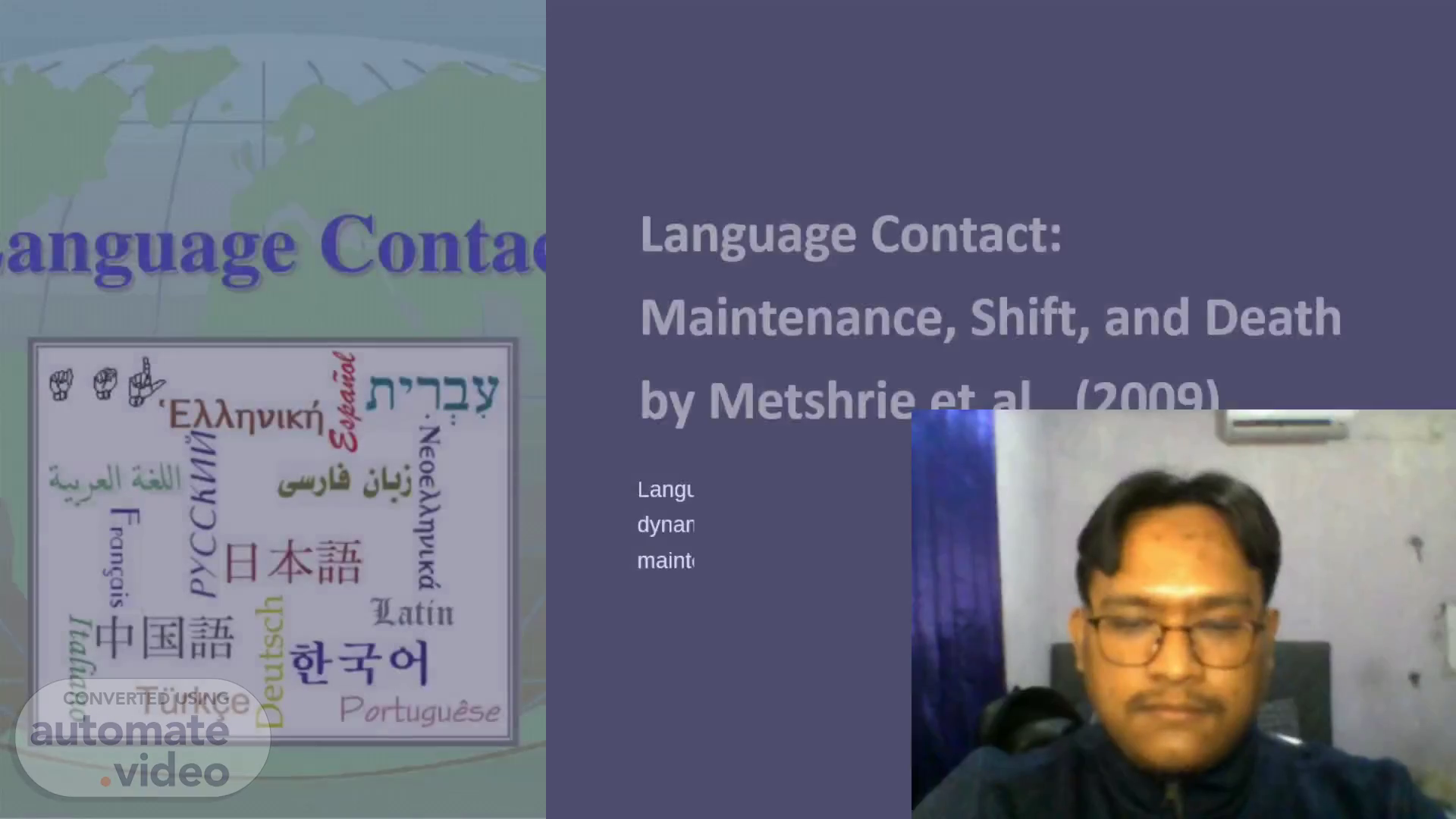
Page 1 (0s)
Language Contact: Maintenance, Shift, and Death by Metshrie et.al., (2009).
Page 2 (27s)
[Audio] Language contact is an essential element to understanding the evolution of languages. Metshrie et al., (2009) views it as the interaction between two or more languages when they come into contact. This can be caused by increased social communication between neighbouring territories or, more commonly, through the spread of powerful or prestigious languages due to colonization or invasion. Analyzing language contact allows us to understand how languages have changed and developed over time, and how they have impacted each other. Additionally, it helps us recognize the forces that drive language shifts, maintain linguistic variety, and protect cultural heritages. With this knowledge we can reduce the decline of a variety of languages and safeguard their unique features..
Page 3 (1m 17s)
[Audio] Language contact is a key factor in the evolution of languages over time. Metshrie et.al., 2009 studied this subject and identified three main concepts: language maintenance, language shift and language death. Language maintenance occurs when a less-dominant language is preserved even amid the presence of a more powerful language in the region or society. Language shift signifies the situation where one language is supplanted as the primary method of communication among a community by another language. Language death is a term given to the situation where a language is the only one left spoken among its community..
Page 4 (2m 0s)
[Audio] Examining the consequences of language contact, Metshrie et.al. focus on three main issues: maintenance, shift and death. The paper delves into language borrowing and how various languages come in contact with one another. Additionally, it focuses on language shift, when a bilingual community gradually adopts one language over another. The paper also highlights the potential consequences of language death and the sociolinguistic outcomes of language contact..
Page 5 (2m 51s)
[Audio] Language contact has a considerable impact on the maintenance, alteration, and demise of a language. Whether a language may be retained often relies on economic prospects in a society: individuals may be incentivized to use and pass on a language when it is of worth to the community. Additionally, language can be kept alive when it is viewed with a greater respect and social status. Finally, a language's permanency may be influenced by the numbers of its speakers: larger communities with more speakers are more likely to keep their language, while smaller groups may find it more difficult to retain theirs..
Page 6 (3m 48s)
[Audio] Metshrie et al. (2009) investigate the consequences of language contact and the impact on language speakers and their languages. Examining how languages are altered and how contact between cultures affects languages in contact, they further explore the conditions for speakers to preserve their languages in the face of society changes. Moreover, the authors explore the power dynamics and decisions made by minoritized communities in contact situations, understanding language shift and death as a matter of power politics, and advising linguists to collaborate with communities to make conscious language maintenance choices..
Page 7 (4m 26s)
[Audio] This paper by Metshrie et.al., (2009) looks closely at the phenomenon of language contact and the results it has on speakers and the languages they use. It discusses language displacement and dominance, cultural contact, language adaptation, and how minority communities can sometimes preserve their languages despite being affected by societal changes. The authors emphasize the great consideration needed for the decisions made by minority groups concerning their language in these settings, and assert the need for linguists to collaborate with these communities so the groups can make knowledgeable choices and keep their languages alive. Language contact is a substantial subject and this paper gives a thorough and informative analysis of its effects..
Page 8 (5m 12s)
Thank you.